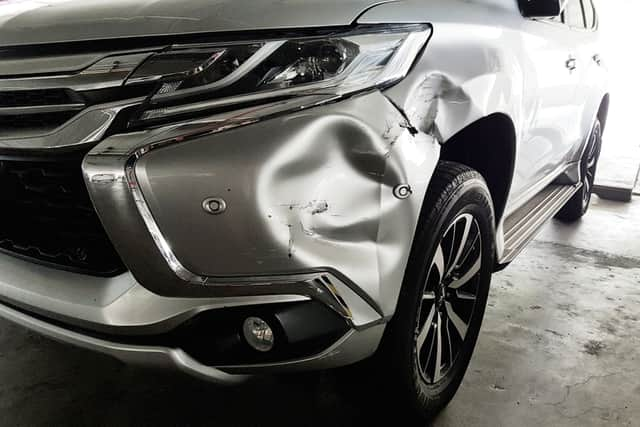What is fair wear and tear on lease cars? How to avoid extra fees when returning a car - what to look out for
This article contains affiliate links. We may earn a small commission on items purchased through this article, but that does not affect our editorial judgement.


The start of March brings the introduction of the new ‘22’ number plate and will see many drivers on lease deals switch into a shiny new car.
Leasing is an increasingly popular way for motorists to secure a brand new car every few years and avoid MOTs and the repair bills that crop up with older cars.
Advertisement
Hide AdAdvertisement
Hide AdHowever, returning a lease car isn’t without its own worries and experts have warned that drivers could be caught out with unexpected bills or fees if they are not careful.
Duncan McClure Fisher, CEO of MotorEasy said that failing to return a car in an acceptable condition could land drivers with a bill running into thousands of pounds. He commented: “Even the most careful of motorists won’t be able to keep their car in showroom condition throughout the life of a lease term.


“Chips and stones flying up off the Tarmac, dozy shoppers opening car doors too wide in car parks – the list of things that can do superficial damage to a vehicle is almost endless.
“Then there’s the fact that there is bound to be some sort of wear and tear if you are driving a car for a number of years.”
Advertisement
Hide AdAdvertisement
Hide AdTo reflect this, the British Vehicle Rental and Leasing Association (BVRLA) has a set of rules detailing what counts as “fair wear and tear”, which lease companies are expected to follow.
As long as your car meets this criteria you shouldn’t be charged any extra fees:
- Scratches – Those up to 25mm won’t see you penalised, either on the paintwork or headlights. But if they go deep enough to reach the primer layer then you will be charged a fee.
- Dents – No more than two panels damaged and only dents up to 10mm are acceptable, as long as the paintwork is still intact. The only exceptions are on the roof and the swage line – the curve on the side usually in line with the door handles.
- Tyres – They must meet minimum legal UK tread requirements (1.6mm) and show no damage, including to the sidewalls.
- Wheels – There is some leeway on scuffs to trims or alloys, up to 50mm on the total circumference, but holes and dents are not acceptable.
- Interior – There must be no noticeable damage – such as burns, tears, stains or scratches – and match the original design. Seat belts, mirrors and sun visors need to be clean and undamaged.
Those rules cover the visual condition of the car but it’s also important that the mechanical components aren’t unduly worn or damaged, so sticking to the manufacturer’s maintenance and servicing schedule is vital. Your car’s handbook will list the service intervals but most modern cars also include a service indicator within the on-board trip computer.
Exceeding your agreed mileage can also rack up substantial additional costs as it affects the car’s resale value. Excess mileage fees can range from 3p to 30p per extra mile.
Advertisement
Hide AdAdvertisement
Hide AdAnd you’ll want to make sure you return the car with everything it arrived with. Mr McLure Fisher commented: “If you’ve managed to lose a set of keys, this can be a costly mistake. Modern car keys aren’t cheap and you could be looking at up to £200 for them to be replaced.”


Any leasing firm that is part of the BVRLA is expected to follow its rules on fair wear and tear but if you disagree with an assessment at the end of your lease, you can challenge it.
You have the right to request for an independent qualified engineer to examine the evidence, although this will be at your own cost. Their judgement is final, but if they find in your favour the leasing firm will have to refund the cost of the engineer’s assessment.
MotorEasy’s Mr McClure Fisher added: “While there might be a few scare stories out there about people being unfairly ‘stung’ for huge bills when they return their vehicles, if you look after it and keep up to date with the service schedule there should be no problems at the end of the term.”
A message from the editor:
Advertisement
Hide AdAdvertisement
Hide AdThank you for reading. NationalWorld is a new national news brand, produced by a team of journalists, editors, video producers and designers who live and work across the UK. Find out more about who’s who in the team, and our editorial values. We want to start a community among our readers, so please follow us on Facebook, Twitter and Instagram, and keep the conversation going. You can also sign up to our newsletters and get a curated selection of our best reads to your inbox every day.
Comment Guidelines
National World encourages reader discussion on our stories. User feedback, insights and back-and-forth exchanges add a rich layer of context to reporting. Please review our Community Guidelines before commenting.
